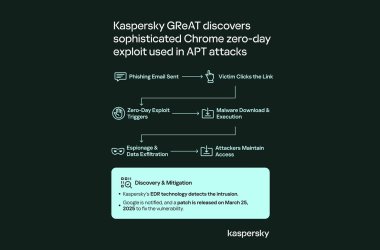
Claude Schuck, regional manager for Middle East & Central Africa, Veeam, discusses how the power of partnerships is delivering business value in a world of data complexity.
The power of partnerships has become very clear in the digitally disrupted world. Businesses in a whole host of sectors are busily working with technology providers to create innovative and exciting propositions, using the newest technologies. Some partnerships deliver much needed technical expertise, such as Audi working with Huawei on its connected car.
Collaborations can also be surprising but despite this stand the test of time, Hewlett-Packard and Disney partnership goes back to when the way back to when Mr. Hewlett, Mr. Packard and Mr. Disney were still involved in the main decisions of their respective companies. Despite coming from entirely different industries, their collaboration has allowed both organisations to continually innovate.
By contrast, software companies themselves have historically believed that the value of their organisation lies in the software itself, often preferring to go it alone, building walls and creating closed products.
Now though, many technologists seek a level of openness from vendors, even those pursuing software that is fundamentality closed or proprietary. To put it simply, software can only truly exist today through partnerships between vendors, and in modern IT environments it is a marriage of storage, compute power, networking and applications that gets the job done.
The cleverness of collaboration
When it comes to solving one of businesses’ biggest challenges – making use of data for business growth while simultaneously keeping it safe, there really is only one option; work together. Collaboration is fundamental to success.
Modern software must have a mix of interoperability (ability to exchange and work with data from other software), and portability (can run in more than one environment and/or operating system). And, it must go beyond simple gestures from a software marketing department.
Partnerships enable collaborators to draw on each other’s expertise, access wider markets and develop innovative, complementary products and services. That’s why it’s estimated that ecosystems could deliver an additional $100 trillion of value for business and wider society over the next 10 years.
Perhaps the most important aspect of partnerships is the ability to orient solutions around the customer and what they need. And when it comes to the world of technology, one of the most critical and urgent business needs is being able to access the full value of data.
The trouble with data
Data can be immensely valuable for every business. Using data, organisations can gain important, actionable business insights, from understanding their customers and what they want through to predicting trends and putting the business in the best position to capitalise on them.
Organisations face a huge challenge, however, when it comes to extracting value from their data. It’s not only the sheer volume of data, which is growing all the time, but the fact that it’s spread out across a whole range of databases, cloud providers and on-premise stores.
With data scattered across the whole enterprise, it is both much more difficult and critical to ensure data availability for everyone in the business. This is an extremely pressing issue, as businesses face the immense lost opportunity of missing out on insights and flawed analysis. But it’s a challenge that is being addressed through the power of partnerships
Delivering data availability
Software providers can deliver exceptional data availability for their customers by working together to create a strong digital ecosystem. That means the providers of both cloud and on-premise solutions coming together in one platform, to deliver a seamless experience for the customer. By developing close relationships with partners, data management platforms can provide hypervisor integration, storage integration and interfaces with critical applications, such as Microsoft 365, all in one place.
In short, creating this close-knit environment means that data is readily available for customers, no matter where it’s stored in the enterprise, or which endpoints or devices they wish to use to access it. CIOs can gain a view of their organisation’s entire IT infrastructure, benefitting from improved operational efficiency and outcomes. Meanwhile there are advantages for managed service providers too, who can gain management capabilities across disparate providers.
Although no one company can deliver comprehensive data availability alone, thanks to collaboration behind the scenes, enterprises can truly benefit from all the data that they hold.
Diverse data protection
The ‘hyper-sprawl’ of data today means that organisations do not only face a headache when it comes to accessing their data: it’s also challenging to ensure that all data is recoverable, in the event of an outage, loss, attack or theft.
The hybrid cloud and multi-cloud computing environment presents particular data protection challenges. For instance, while cloud vendors offer their own backup, snapshotting and high-availability solutions, those approaches all require that technologists learn and understand vendor-specific services.
Again, this is where partnerships between software providers can help. Hardware and software providers can leverage application programming interfaces (APIs) to provide customers with the integration that they need.
Businesses then benefit from a single management solution for their data protection, no matter how many providers they use. In essence, this streamlines backup workflows – and creates stronger data protection across the business.
United for data
Data represents one of the greatest opportunities for enterprises today, but it’s equally one of its biggest challenges. No single provider can provide all the answers when it comes to the issues of data availability and protection in such a diverse IT landscape.
Through collaboration, however, the IT community can deliver a seamless and convenient experience for all businesses. Going it alone won’t cut it, but through the power of partnerships software companies can enable enterprises to access and protect their data.





